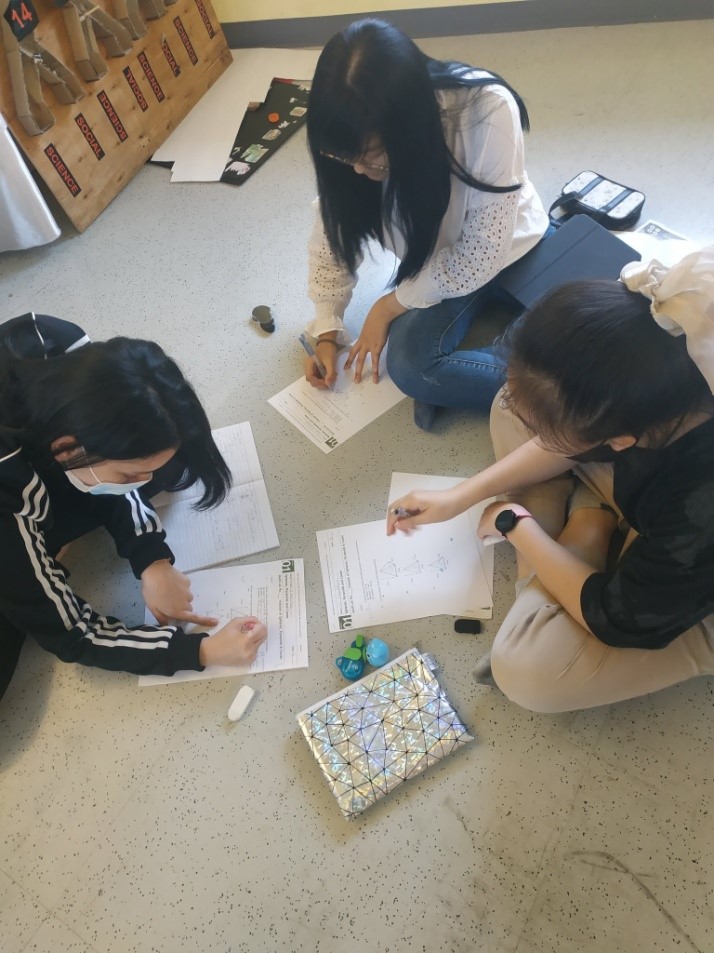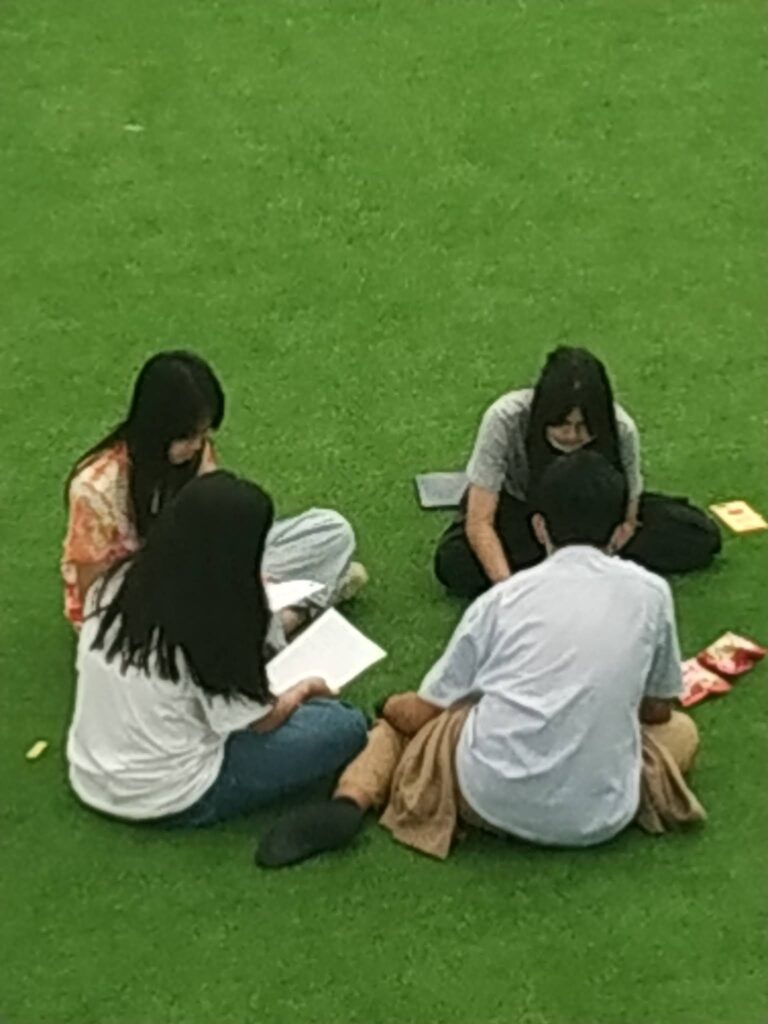Over the years of teaching Mathematics, lecturing and discussing “what and how to” solve solely done by the teacher in front of a Math class have been so tiring and exhausting for students in the audience.
These days, Math teachers must have realized by allowing students to work collaboratively that can create an environment for them to tackle more complicated and more conceptually challenging problems.
When carefully planned and managed, collaborative learning by team up and pairing them up can be a powerful tool for teachers to use Math Lesson time and bring them outside the four walls of the classroom.
The suggested two types of collaborative-learning groupings: partner work and small-group work, (Michigan State University Math Project)
Almost all of the Problems in the Bilingual Department are demanding, requiring students to work in pairs, create great ideas, look for sources and solutions, make analysis then use problem-solving strategies to adapt a solution and reach the target goal.
For this juncture, the Mathematics teacher supports needed to bring the students to work on Math Problems collaboratively.
Group work allows each member in the small group a variety of ways and strategies to adapt to solve the given problems assigned to them.
This pair work creates an atmosphere to persevere in arriving at collaborative tasks and solutions that are more challenging than in ordinary classwork.

Pair and Groupings
Group work is also suggested for Word Problem Solving Parts.
These solving fluency tasks usually are large and complicated ones.
Grouping them to work in a small group allows students to consider a variety of ideas that enable to help them to complete the task in a reasonable amount of time.
This problem below was done in a double period class (100 minutes). I pre-determined the group configurations, there were at least three members in each group and most of our four-member groups, there were considered steps made for an efficient pair work assignment and management in a manner so class time is not wasted.
Assigning space and area where each small group goes to, disseminating the instruction clearly, gathering their solving paraphernalia: Math Lesson Notebooks, MathLab Notebook, “the written word problem” pencil, etc.
Excerpt from “ Problems-Solving” Obtained from Cambridge University Press:

I found a way to decide before class how students were grouped since it is a heterogeneous class.
There are various methods I used to establish those groups, such as assigning the four students to a group for that problem solving indicated above: an above-average student, an average, and “one who needs Math”. Connecting Mathematics with Fluency.
GUIDELINES FOR TEACHERS IN MANAGING WORKING IN PAIRS AND SMALL GROUPS
- Clearly communicate the expectations about the group work to the students and then hold them to those expectations. Hand out or post a set of guidelines so students understand their responsibilities in the small group they are assigned.
2. Move into your groups quickly and get right to work.
3. Allow them time to read the instructions and challenged them to find out the solutions and answers to the assigned task. Be sure every group member knows what the challenge is. (Apply the learned concept during class discussion time.)
4. Part of group work is learning to listen to each other. Tell them to avoid interruptions when their classmates are suggesting something. Make sure each person’s ideas are heard and that the group answers each person’s questions.
5. If they are unsure what to do, instruct them to ask the group to explain. If no one in the group can answer the question, and it is an important question, the teacher is going around assigned places and would be ready to answer challenging questions indicated in the problem.
6. If someone in the group uses a word or an idea you do not understand, ask for an explanation. They must be all responsible for learning. Each member is also responsible for contributing to the work of the group. Student’s explanations for others will help them to understand better.
7. Give everyone in the group a chance to talk about his or her ideas. Talking out loud about your thinking will help them learn to express your arguments and clarify your ideas.

8. If the group gets difficulty and stays up thinking and can’t solve further, “go over and ‘read million times’” what the problem is asking and what to know so far. If this does not give them a new idea, raise their problem to the teacher.
9. Be prepared to share the group’s ideas, solutions, and strategies and to explain why you think you are correct. Make sure you look back at the original Problem and check that their solutions and making a lot of sense.
10. Make a portfolio for recording the group’s ideas and solutions ready for the teacher’s class intervention.
It is one of the most favorite parts of my Math Class students when allowing them to stand up form their normal seating arrangement.
Go out of the class and breath the air from outside. Overall, most of the small groups that worked together, did an amazing job in solving the problem indicated above. – teach and learn with passion and a lot of fun @ RA academy


